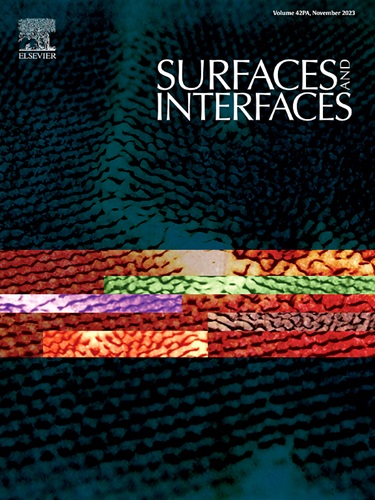Integrating nickel foam@carbon nanotubes composite current collector with MnMoO4 for enhanced performance of supercapacitor electrode
IF 5.7
2区 材料科学
Q2 CHEMISTRY, PHYSICAL
引用次数: 0
Abstract
Nickel foam (NF) has been broadly adopted as the current collector for supercapacitors due to its high porosity, unique three-dimensional (3D) network structure and good electrical conductivity. However, its small specific surface area resulted in a low loading of active materials. Thus, it is of great significance to modify NF to obtain a current collector with high specific surface area. Herein, a 3D NF@CNTs composite current collector was fabricated through in-situ growth of carbon nanotubes (CNTs) on NF by chemical vapor deposition (CVD) method, followed by the combination of MnMoO4 nanoflowers with CNTs via a hydrothermal method, and MnMoO4/NF@CNTs composite electrode was successfully obtained. The results indicated that the distinct design of 3D NF@CNTs composite current collector could offer an efficient mesoporous network, a high specific surface area and rapid electron and ion transfer channels, and accommodate more active sites for MnMoO4 nanoflowers. Accordingly, the optimized MnMoO4–130/NF@CNTs electrode achieved a superior areal capacitance of up to 5300 mF/cm2 (1886.1 F/g) at 2 mA/cm2, and maintained an outstanding rate capability of 79.7 % at 25 mA/cm2. After 2000 charge/discharge cycles, MnMoO4–130/NF@CNTs possessed a capacitance retention rate of 81.0 %. Besides, a symmetric supercapacitor (SSC) was eventually fabricated based on MnMoO4–130/NF@CNTs electrodes, and it delivered a favorable energy density of 0.0197 mWh/cm2 at a power density of 0.3 mW/cm2, along with a superb cycling performance with the capacitance retention rate of 94.7 % after 2000 cycles. The above results demonstrated that the 3D NF@CNTs composite current collector achieved by the CVD process would be a good route to improve the effective specific surface area of NF and the loading of active materials for high-performance supercapacitors.

求助全文
约1分钟内获得全文
求助全文
来源期刊

Surfaces and Interfaces
Chemistry-General Chemistry
CiteScore
8.50
自引率
6.50%
发文量
753
审稿时长
35 days
期刊介绍:
The aim of the journal is to provide a respectful outlet for ''sound science'' papers in all research areas on surfaces and interfaces. We define sound science papers as papers that describe new and well-executed research, but that do not necessarily provide brand new insights or are merely a description of research results.
Surfaces and Interfaces publishes research papers in all fields of surface science which may not always find the right home on first submission to our Elsevier sister journals (Applied Surface, Surface and Coatings Technology, Thin Solid Films)
 求助内容:
求助内容: 应助结果提醒方式:
应助结果提醒方式:


